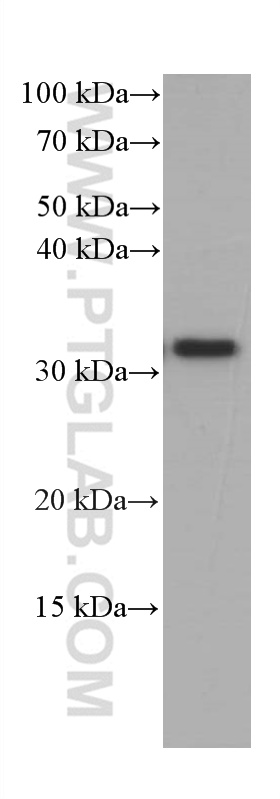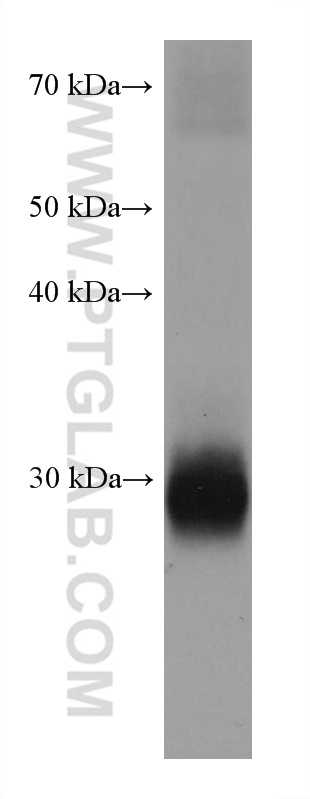验证数据展示
产品信息
66502-1-PBS targets CD40L/CD154 in WB, Indirect ELISA applications and shows reactivity with Human, rat samples.
| 经测试应用 | WB, Indirect ELISA Application Description |
| 经测试反应性 | Human, rat |
| 免疫原 | CD40L/CD154 fusion protein Ag24941 种属同源性预测 |
| 宿主/亚型 | Mouse / IgG2a |
| 抗体类别 | Monoclonal |
| 产品类型 | Antibody |
| 全称 | CD40 ligand |
| 别名 | CD154, CD40 L, CD40 ligand, CD40L, CD40L/CD154, CD40LG, gp39, hCD40L, HIGM1, IGM, IMD3, T BAM, T cell antigen Gp39, TNF related activation protein, TNFSF5, TRAP |
| 计算分子量 | 261 aa, 29 kDa |
| 观测分子量 | 30 kDa |
| GenBank蛋白编号 | BC071754 |
| 基因名称 | CD40 Ligand |
| Gene ID (NCBI) | 959 |
| RRID | AB_2881866 |
| 偶联类型 | Unconjugated |
| 形式 | Liquid |
| 纯化方式 | Protein A purification |
| UNIPROT ID | P29965 |
| 储存缓冲液 | PBS only , pH 7.3 |
| 储存条件 | Store at -80°C. The product is shipped with ice packs. Upon receipt, store it immediately at -80°C |
背景介绍
The CD40 ligand (CD40L, TRAP, CD154), a member of the TNF superfamily of ligands, is expressed as either a 33-kd transmembrane homologue or 18-kd soluble form (sCD154). CD40L is primarily expressed on activated CD4+ T cells and on a small proportion of CD8+ T cells and platelets. It binds to CD40 on antigen-presenting cells (APC), which leads to many effects depending on the target cell type. Recent studies have suggested that CD40/CD40L interactions regulate oxidative stress and affect various signaling pathways in both the immunological and the cardiovascular systems. The CD40/CD40L system is also involved in tumorigenesis. Its expression is tightly regulated, and abnormal levels of CD40L are associated with the pathogenesis of atheromatous plaque destabilization and thrombotic events. Multiple mutations in CD40LG gene have been identified that are associated with hyper-IgM immunodeficiency syndrome type 1.

